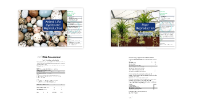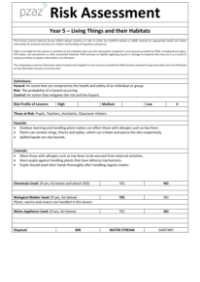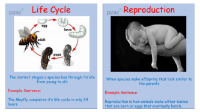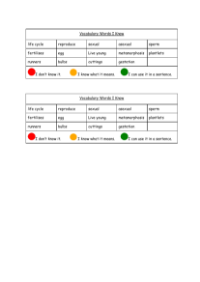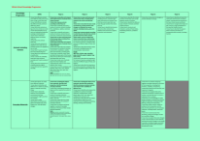Living Things and their Habitats - Assessment
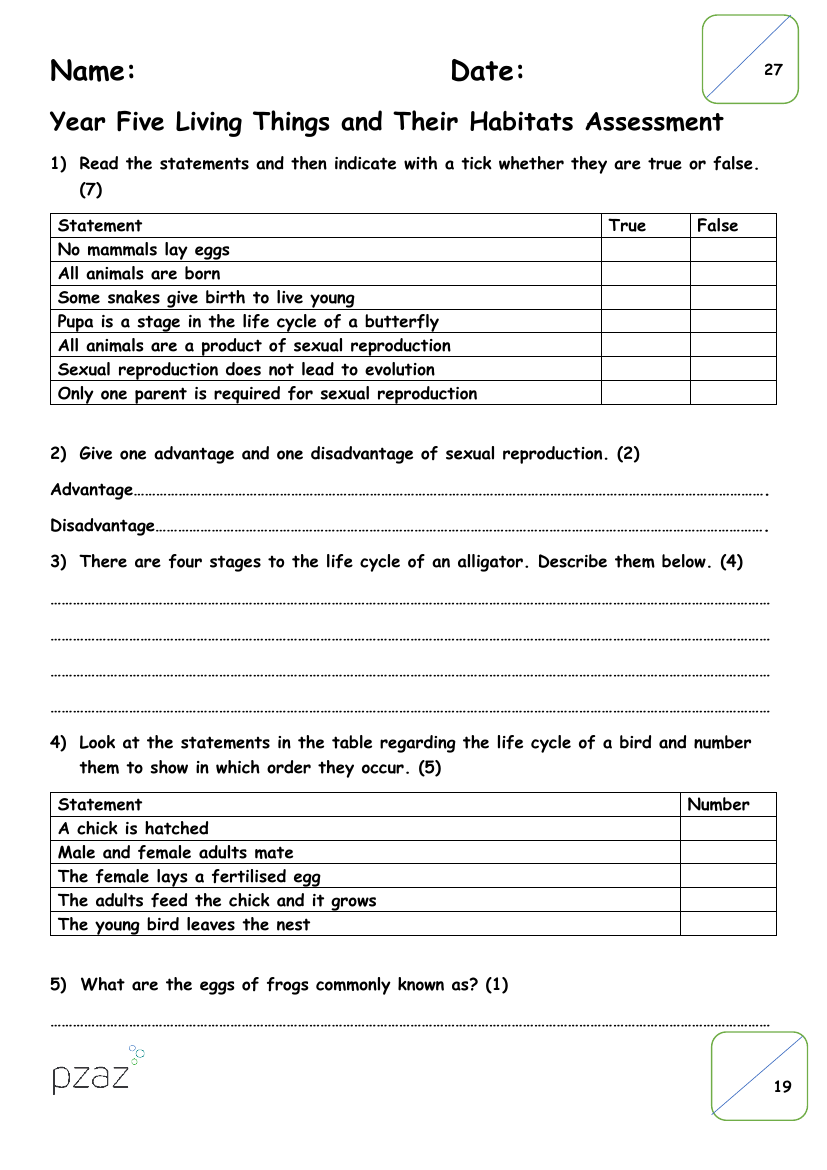
Science Resource Description
The Year Five Living Things and Their Habitats Assessment is a comprehensive evaluation of students' understanding of various biological concepts. The assessment begins with a true or false section where students must read statements and tick the correct option. These statements cover topics such as mammalian reproduction, the life cycle of butterflies, and misconceptions about sexual reproduction. For example, students are asked to consider whether all mammals give birth to live young, and if sexual reproduction is the only way that animals can reproduce and contribute to evolution.
Following this, the assessment requires students to articulate the advantages and disadvantages of sexual reproduction, allowing them to demonstrate an understanding of the complexity of biological reproduction. They must also describe the four stages of an alligator's life cycle in detail, showing knowledge of development from egg to adulthood. In another section, students are tasked with sequencing the life cycle of a bird, from mating to the young leaving the nest. Additionally, students are quizzed on their knowledge of amphibian reproduction by identifying what frog eggs are commonly called, and they must name the male sex cell in plants as well as the part of the flower where it lands to initiate seed formation. The assessment further explores plant biology by asking for a description of one method of asexual reproduction in plants and naming three methods of seed dispersal, thereby testing the students' grasp of plant life cycles and reproductive strategies.

